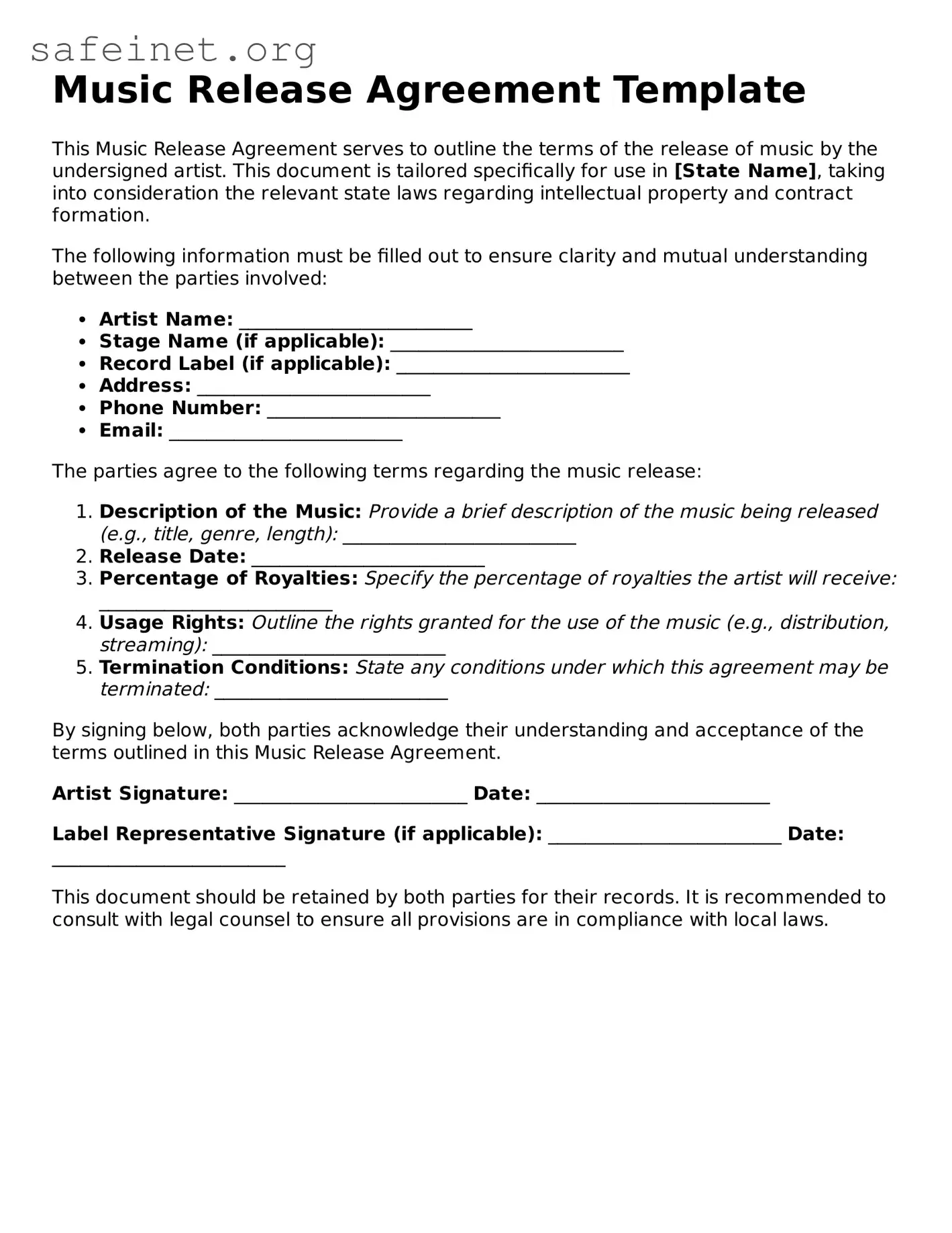What is a Music Release form?
A Music Release form is a legal document that grants permission to use a piece of music. This form typically clarifies who owns the rights to the music and outlines how it can be used. It ensures that both the creator and the user understand their rights and responsibilities when it comes to the music.
When should I use a Music Release form?
You should use a Music Release form whenever you plan to use someone else's music in your project, whether it be for a film, video, advertisement, or any other form of media. It is crucial to obtain consent to avoid potential copyright infringement issues. Even for personal projects, having a release form provides legal clarity.
What information is typically included in a Music Release form?
A Music Release form generally includes details such as the names of the parties involved, a description of the music, the intended use of the music, and any compensation arrangements. Additionally, it may specify the duration of the license and geographic limitations, if applicable.
Do I need to pay for the rights to use music?
Depending on the agreement set forth in the Music Release form, payment may or may not be required. If the creator of the music is granting rights for free, that will be noted in the form. Alternatively, if there is a fee for usage, the terms will specify the amount and payment schedule.
Can I modify the music after obtaining a Music Release?
Whether you can modify the music after obtaining a Music Release depends on the terms outlined in the document. Some agreements allow for modifications, while others may prohibit any alterations. It is essential to read and understand the terms to ensure compliance with the intentions of the music creator.
Is a Music Release form legally binding?
Yes, a Music Release form is a legally binding document once it is signed by all parties involved. However, for it to hold up in court, it should be clear and comprehensive. It’s advisable to have both parties retain copies of the signed form for their records.
What happens if I don’t use a Music Release form?
If you do not use a Music Release form, you risk infringing on the copyright of the music creator. This could lead to potential legal action against you, which might involve financial liabilities or the removal of your project from circulation. It's always best to have written permission to protect yourself and your interests.
